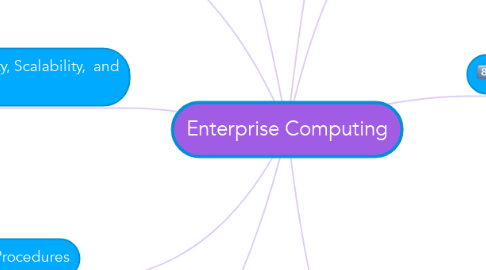Enterprise Computing
by Teo Leng


1. What is Enterprise Computing?
1.1. Involves the use of computers in networks
1.2. Such as WANs and LANs
1.3. A series of interconnected networks that encompass a variety of different operating systems, protocols, and network architectures
2. Virtualization
2.1. Server virtualization
2.1.1. Divide a physical server logically into many virtual servers
2.2. Storage virtualization
2.2.1. Create a single logical storage device from many physical storage devices
3. High Availability, Scalability, and Interoperability
3.1. High-availability system: runs and performs tasks for at least 99 percent of the time
3.1.1. May include hot-swapping and redundant components
3.2. Scalability: A measure of how well computer hardware, software, or an information system can grow
3.2.1. Increasing performance demands
3.3. Interoperability : The ability for an information system to share information with other information systems within an enterprise
4. Backup Procedures
4.1. Disaster recovery plan: A written plan describing the steps a company would take to restore computer operations in the event of a disaster
4.1.1. Emergency plan
4.1.2. Backup plan
4.1.3. Recovery plan
4.1.4. Test plan
